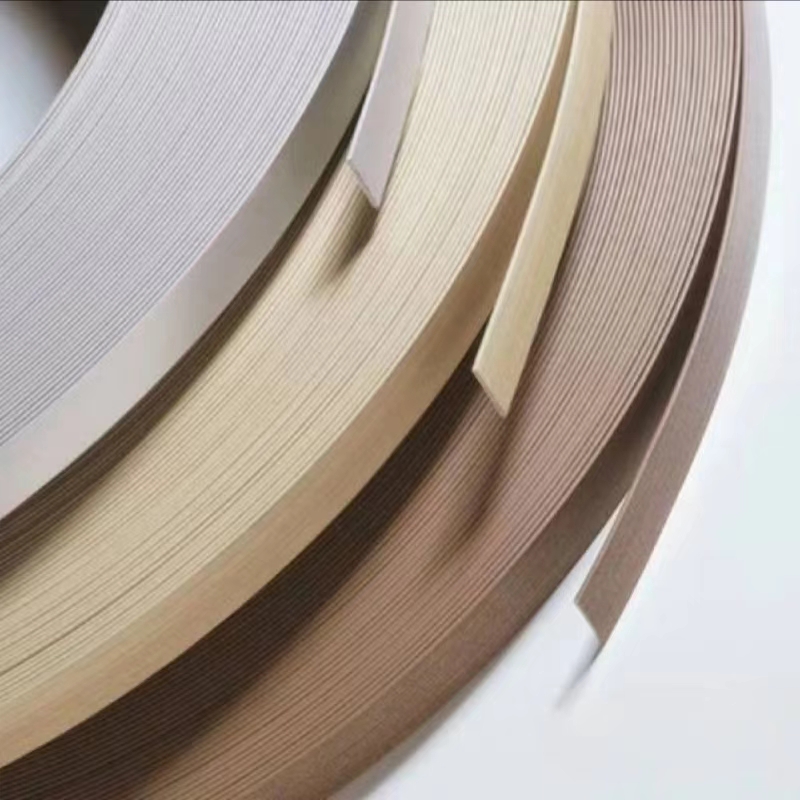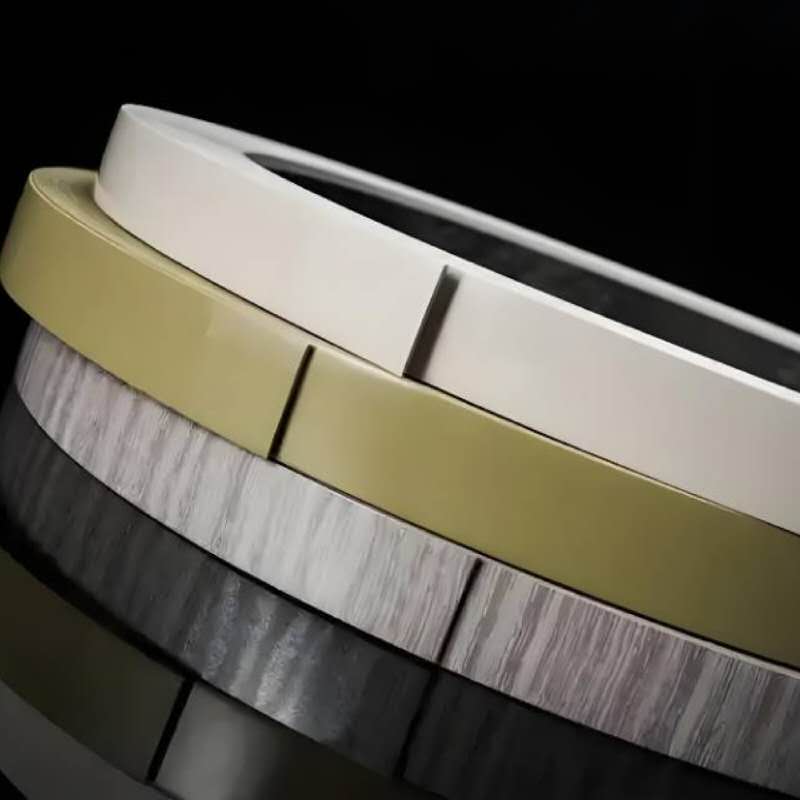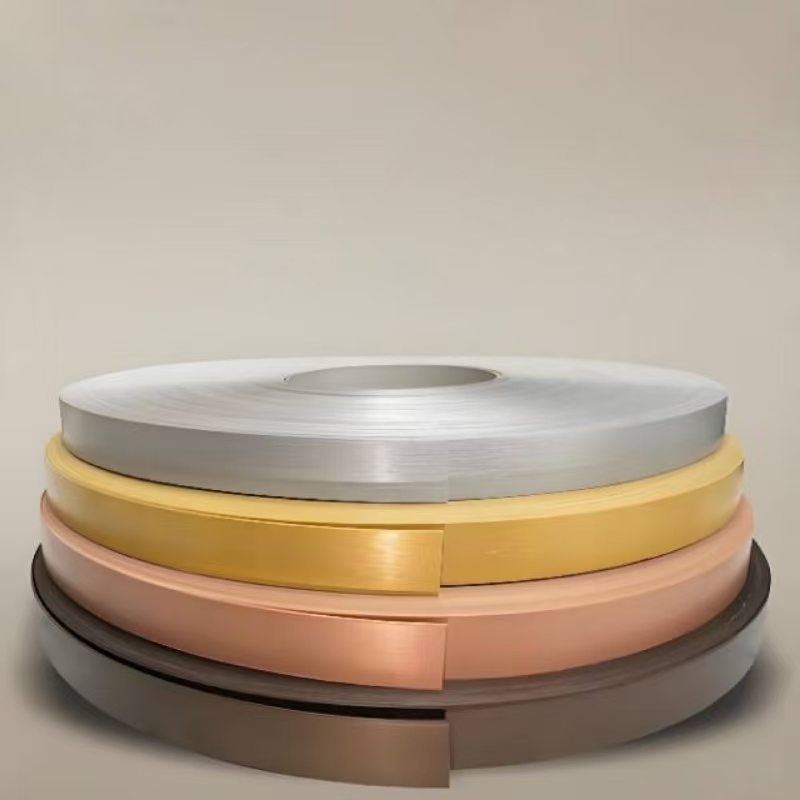PVC edging strip is widely used in furniture manufacturing, interior decoration and many other fields. It has become one of the most commonly used edge banding materials on the market due to its good processability, water resistance and economy. However, in actual use, PVC edging strip bubbling often occurs, which seriously affects the appearance and functionality of the edge banding. Bubbling not only makes the appearance of furniture unsightly, but may even cause edge banding failure and shorten the service life. So, why does PVC edging strip bubble? How to solve this problem?
This article will discuss in detail the reasons for PVC edging strip bubbling and provide specific methods to solve this problem. Through in-depth analysis of the reasons for bubbling and combined with practical operation experience, this article aims to provide users with a comprehensive solution to fundamentally improve the application effect of PVC edge banding.

What is the reason for PVC edging strip bubbling?
The reasons for PVC edging strip bubbling are:
1.1 Temperature and humidity changes
1.2 Adhesive selection and application issues
1.3 Improper surface treatment of the substrate
1.4 Construction process issues
1.5 Improper storage and transportation
1.1 Temperature and humidity changes
One of the most common reasons for PVC edging strip bubbling is temperature and humidity changes. Under different environmental conditions, PVC materials may expand and contract. Especially in humid or high-temperature environments, PVC edging strips may expand after being heated, while in dry or low-temperature environments, the material may contract. This phenomenon of thermal expansion and contraction will cause gaps in the bonding surface between the PVC edge banding and the substrate, causing the formation of bubbles.
Effect of temperature changes
When the temperature is high, the PVC edging strip will expand and become softer. If the edge banding is directly attached to the edge of wood or composite materials in a high-temperature environment, the high temperature may cause a weak bond and a loose interface between the edge banding and the substrate, resulting in the formation of bubbles.
Effect of humidity changes
PVC edge banding has poor moisture absorption, but extreme humidity changes may still affect it. Especially in a humid environment, PVC edging strip may expand due to the absorption of moisture in the environment. This expansion may also cause gaps in the bonding surface, allowing bubbles to form.
1.2 Adhesive selection and application issues
Adhesives play a vital role in the application of PVC edge banding. If the type of adhesive is not suitable or the method of use is improper, it is easy to cause PVC edging strips to bubble. The choice of adhesive not only affects the bonding effect, but also directly affects the durability and stability of the edge banding. Common adhesives include hot melt adhesives, solvent-based glues, etc. Different types of glues have different adhesion and curing times for PVC edge banding. Wrong selection and operation may cause PVC edge banding to bubble.
Adhesive mismatch
In some cases, the selected adhesive may not be suitable for the material of the PVC edging strip, resulting in weak bonding. When the edge banding is subjected to external forces, bubbles are likely to appear in the edge banding that is not firmly bonded.
Uneven adhesive application
During the construction process, uneven adhesive application is also a major cause of blistering. If the adhesive is applied too thick or unevenly, there may be too much glue in some areas and insufficient adhesion in others. Excessive adhesive may expand during the drying process, causing bubbles.

1.3 Improper surface treatment of the substrate
The adhesion of the PVC edge banding to the substrate is directly affected by the surface condition of the substrate. If there is oil, dust, wet paint or uneven surface on the substrate surface, the adhesive cannot form a good adhesion with the substrate, resulting in blistering of the edge banding.
Effect of oil and dust
If there are impurities such as oil and dust on the substrate surface, the adhesive cannot form a good bond with the substrate, resulting in a weak adhesion between the PVC edging strip and the substrate. Oil is particularly likely to prevent the adhesive from contacting the substrate surface, resulting in a weak PVC edge banding, and bubbles may form in the gaps.
Surface smoothness and unevenness
If the substrate surface is too smooth or has bumps and bumps, it will also affect the adhesion of the PVC edge banding. This uneven surface will cause uneven distribution of the adhesive and cause the formation of bubbles.
1.4 Construction process problems
Improper construction process of PVC edge banding is also an important factor leading to blistering. The installation of edge banding requires certain techniques and operating specifications. If the operation is improper, the adhesive may not be in sufficient contact between the edge banding and the substrate, resulting in bubbles.
Improper temperature control
When using hot melt adhesive or other types of hot melt adhesives, temperature control is very important. If the temperature is too high, the glue may melt excessively and cannot be evenly applied; if the temperature is too low, the adhesive strength of the glue will decrease and gaps will easily form. Improper operation will cause blistering of the edge banding.
Uneven pressure
PVC edge banding needs to be evenly pressed when pasting. If the pressure applied is uneven during the pasting process, some places may not be firmly pasted and bubbles will form. Therefore, during the construction process, ensure that the entire PVC edge banding surface is evenly stressed.
1.5 Improper storage and transportation
PVC edging strips may be deformed or damaged during storage and transportation due to long-term compression, temperature fluctuations or humid environments. When cracks or bubbles appear on the surface of PVC edge banding, it may affect the bonding effect.

How to solve the blistering problem of PVC edging strip?
2.1 Control temperature and humidity
To avoid blistering of PVC edging strip due to temperature and humidity changes, it is necessary to ensure the stability of the construction environment first. Before construction, it is best to control the temperature and humidity of the installation area. The temperature should be controlled between 15°C and 25°C, and the relative humidity should be maintained between 40% and 60%. Excessive temperature or humidity will cause the PVC edge banding to expand or contract, so good environmental conditions must be maintained.
2.2 Choose the right adhesive
When choosing an adhesive, match the adhesive according to the characteristics of the PVC edging strip and the substrate. For PVC edging strip, it is recommended to use a dedicated PVC edge banding glue or hot melt glue, which has good adhesion and temperature resistance. In addition, during construction, ensure that the adhesive is evenly applied, and avoid excessive application to ensure that the thickness of the glue layer is moderate.
2.3 Ensure the substrate surface is clean
Before sticking the PVC edging strip, be sure to carefully clean the substrate surface to ensure that there is no dust, oil or other impurities. You can use alcohol or special cleaning agents to clean the surface of the substrate to ensure that the surface is clean, dry and oil-free. At the same time, if the surface of the substrate is uneven, it can be polished or otherwise trimmed to ensure a smooth surface.
2.4 Optimize construction technology
● Uniform heating: For edge banding strips using hot melt adhesive, ensure that the glue is heated evenly to avoid local overheating or overcooling, and ensure uniform application of the glue and good bonding effect.
● Uniform pressure: During the PVC edge banding process, it is crucial to apply uniform pressure. You can use a special press or hand tool to ensure that there is no air gap between the edge banding surface and the substrate to prevent bubbles.
2.5 Improve storage and transportation
PVC edging strips should be avoided from exposure to extreme temperature or humidity during storage and transportation to avoid compression deformation. The edge banding should be kept horizontal during storage, and avoid stacking heavy items to prevent deformation. Appropriate protective measures should also be taken during transportation to avoid prolonged exposure to moisture or high temperature environments.

How to Get the Best Deals on PVC Edge Banding in China?
If you are in search of discounted PVC edge banding with wholesale prices, Tingjie offers the best deals for international buyers. Our factory in Guangdong, China, produces customized ABS and PVC edge banding solutions tailored to different furniture designs and cabinetry applications. We manufacture in various widths, thicknesses, and colors, ensuring a perfect match for your projects. With bulk supply options and competitive pricing, we cater to businesses in Europe, the Middle East, and Southeast Asia. Contact us today to receive exclusive factory quotes and special promotions!




